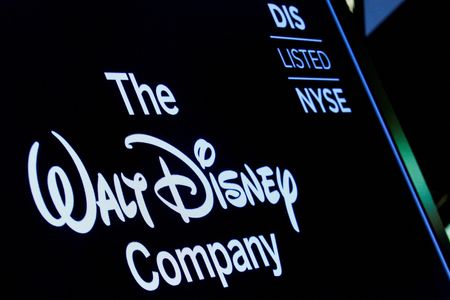By Devik Jain, Bansari Mayur Kamdar and Sinéad Carew
(Reuters) – All three of Wall Street’s major indexes advanced more than 1% on Thursday as investors considered the Federal Reserve’s path for interest rate hikes and worries eased about the prospects of a Russian default after creditors received payments.
Investors were reassured that Russia may, at least for now, have averted what would have been its first external bond default in a century. This was because creditors received payment, in dollars, of Russian bond coupons which fell due this week, two market sources told Reuters on Thursday.
The S&P 500, the Dow Jones Industrial Average and the Nasdaq registered their biggest 3-session percentage gain since early November 2020 after the reports boosted risk appetites in a market already benefiting from bargain hunting. The S&P 500 also witnessed its third straight day of more than 1% advances.
The Fed had raised interest rates by a quarter of a percentage point on Wednesday as expected and forecast an aggressive plan for further hikes while policymakers also trimmed economic growth projections for the year.
The Russian payment news and a breaking of technical decline lines “to the upside” in indices, including the S&P and the Nasdaq, all boosted stocks, according to Michael James, managing director of equity trading at Wedbush Securities.
“It’s giving investors an increased level of cautious optimism which is a change from the significant pessimism we’ve been experiencing since early January,” said James.
“People have gotten more comfortable with the fact rates are going higher. This has been talked about ad nauseum by Chairman (Jerome) Powell since early December,” he said. “The fact there were no significant negative surprises in the Fed’s plans coming out of the meeting, and Powell’s commentary, gave people a sense that maybe we’ve seen as bad as it’s going to get in the near term.”
Describing the Fed’s plans as dovish, Phil Blancato, CEO of Ladenburg Thalmann Asset Management in New York also said the continuation of Russia, Ukraine peace talks helped the mood.
“What you’re seeing today simply as a spillover effect from yesterday,” said Blancato. “There’s a potential resolution for the conflict overseas, the positive effects of the Federal Reserve and stocks at a very fair entry point, providing an opportunity to add risk.”
The Dow Jones Industrial Average .DJI rose 417.66 points, or 1.23%, to 34,480.76, the S&P 500 .SPX gained 53.81 points, or 1.23%, to 4,411.67 and the Nasdaq Composite .IXIC added 178.23 points, or 1.33%, to 13,614.78.
The energy sector .SPNY was the biggest percentage gainer among the S&P’s 11 major industry sectors, ending up 3.5% as oil prices rose 8% as the crude market rebounded from several days of losses with a renewed focus on supply shortages in coming weeks due to sanctions on Russia. O/R
The sector laggards were more the most defensive industries with utilities .SPLRCU adding just 0.5% and consumer staples .SPLRCS, which rose 0.6%.
The interest rate sensitive S&P banks index .SPXBK ended the session slightly higher after falling 2% earlier in the session and rallying 3.7% on Wednesday. The U.S. Treasury yield curve rebounded, after earlier reaching its flattest level in more than two years. US/
Russian and Ukrainian officials met again on Thursday for peace talks, but said their positions were far apart.
Earlier on Thursday, data showed weekly jobless claims fell last week as demand for labor remained strong, positioning the economy for another month of solid job gains.
Advancing issues outnumbered declining ones on the NYSE by a 4.10-to-1 ratio; on Nasdaq, a 2.93-to-1 ratio favored advancers.
The S&P 500 posted 18 new 52-week highs and no new lows; the Nasdaq Composite recorded 46 new highs and 53 new lows.
On U.S. exchanges 12.88 billion shares changed hands compared with the 20 day moving average of 14.18 billion.
(Reporting by Sinéad Carew, Devik Jain, Susan Mathew and Bansari Mayur Kamdar in Bengaluru; Editing by Anil D’Silva, Sriraj Kalluvila and Aurora Ellis)











